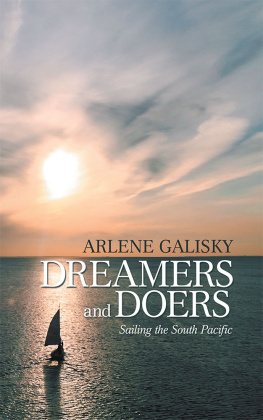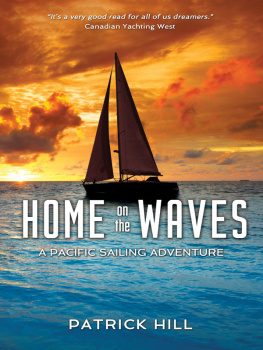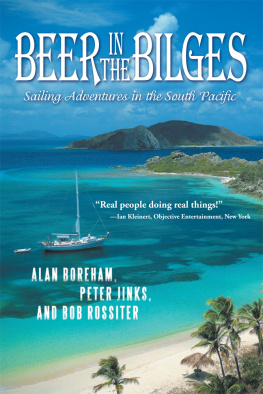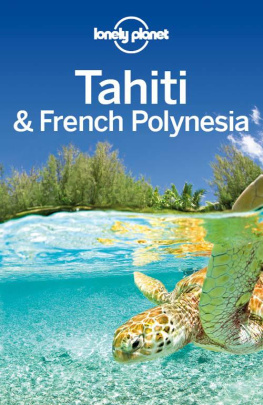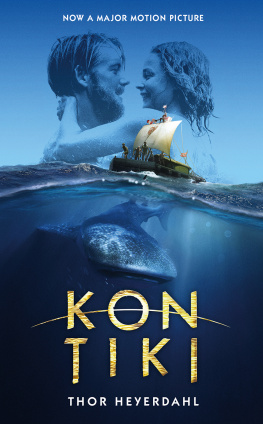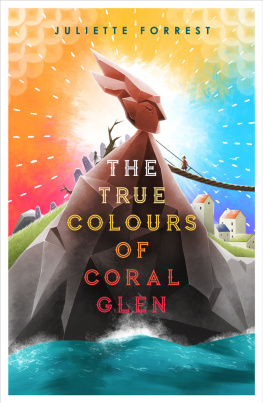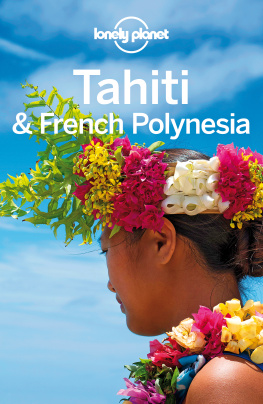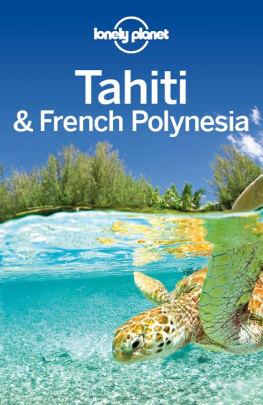All rights reserved. No portion of this book may be reproduced in any form without permission from the author except for the use of quotations in a book review.
Any resemblance to persons living or dead should be plainly apparent to them and those who know them, especially if the author has been kind enough to have provided their real names and, in some cases, their photographs. All events described herein actually happened, though on occasion the author has taken certain, very small, liberties with chronology.
Introduction
When I was still living in a small apartment on the Slovenian coast, I got through the windy winters with the help of a large poster that hung above my bed. There wasnt much to see: a sandy beach, a slender palm tree bowing to the deep blue sea. Back then, I could never have imagined that I would end up living my life against this backdrop. Even now, Im sometimes not entirely sure that the whole thing wasnt just a dream.

I caught the travel bug in sunny Greece. In the years that followed, I went on a couple of diving trips to Egypt and was completely enchanted by a visit to Cuba. I bought my first one-way ticket in 2009, when I packed a small backpack and travelled through Thailand, Malaysia and Australia. I met Rick down under, and we started chasing the horizon together.
We spent a year sailing along the east coast of Australia on a simple sloop called Marutji and then moved to the Americas, where we bought our new boat, Calypso , a beautiful 36 cutter. We explored the western coast of Mexico for three years before giving in to the siren call of the South Seas. We crossed the Pacific in 2014, sailing across three thousand nautical miles. I described those thirty-two days on the open seas in my first book, A Drop in the Ocean. The ocean crossing was followed by three years of eternal summer in French Polynesia, which I have tried to capture in this book.

Having spent over a decade travelling and meeting people from all over the world, I am convinced that our environment greatly shapes our character. Polynesians spend their lives surrounded by the vibrant colours of the tropics, which never fail to take my breath away. In this remote paradise, a glance at the electrifying azure of the sea was enough to fill me with energy, and the leaves of the palm trees were so effervescently green that they looked fake.
This abundance of colour has made the Polynesians a vivacious people. In the three years I spent there, I met only proud and joyful people whose lives are modest and rich in equal measure. They do everything with passion, whether its fishing, playing the ukulele, dancing, singing, or paddling a canoe.
The intensity of life in Polynesia touched every corner of my soul, and I know it will stay with me forever.
I hope that my stories and photographs can help you feel the warmth of the tropical sun, the healing vigour of the trade winds, and the joy of a life steeped in colour.
Let this book become for you what that poster above my bed was for me: a window into a dream that just might come true someday.

1. Hiva Oa
Welcome to Polynesia! A primer on Polynesian geography A seafarers oasis in Taha Uku Bananas and tikis Hanamenu Bay Horse on a boat A trip to the fresh-water pool Trading rum for sandals

Bonjour, Madame.
The young French gendarme asked us to take a seat.
Thank God, we thought, silently hoping for the paperwork to take as long as possible. Still panting after an hour-long climb under the blaring tropical sun, we collapsed onto the seats and angled our sweaty faces towards the refreshing blast of the air conditioner.
The gendarme handed us an entry form for yacht crews entering French Polynesia for the first time. For a moment, I wondered how he knew that we had arrived on a boat, but smiled when I caught a reflection of myself in the window; I was deeply tanned, my hair bleached by the sun and tousled by the wind, with rumpled clothes and threadbare sandals on my feet. My sunglasses were encrusted with salt, and Ricks backpack had started to mould. One look at us was enough to know that we had spent a long time at sea.
The sailboat gets a three-year permit, explained the tanned Frenchman as soon as we handed over a filled-out form. He took a quick look at our passports, made copies and returned them to us. I had been hoping for a new stamp, but as a European in what is officially Europe, I had no such luck. Americans, Canadians and Australians only get a three-month visa upon arrival, but residents of the Old Continent can stay as long as we want in this remote French territory.
The bureaucracy in French Polynesia is remarkably straightforward in other respects, as well. In most other countries, the crew is not allowed to leave the boat until all the entry formalities have been sorted out. When sailing into a countrys territory for the first time, we have to hoist a yellow flag signalling that we would like to check in. Sometimes we dock at the pier near the Harbourmasters office, while other times, we just drop anchor nearby and wait for someone to notice us and grace us with an official visit. Each country has a slightly different entry procedure, but usually, one can expect a visit from two or three different types of officials sometimes even more. First, they inspect the crews passports and boat papers. While stamping all the paperwork, they explain how long we can stay and how to extend our visa if we wish to stay longer. After that, its the health inspectors turn, who checks on the crews health and whether there are any animals on board. Sometimes they even fumigate the boat if they suspect there might be a bug infestation in the bilge. Some countries have very strict rules regarding food. In New Zealand, for example, they will confiscate all fruit and vegetables, seeds, dairy products, meat, honey, and any other suspicious edible items they can find.

After all that, its finally time for the customs officers to board and make sure that were not smuggling anything. All of these officials come armed with reams of forms, and filling them out can make the registration process take hours.
In light of this, we were pleasantly surprised to find out that we dont have to wait for any officials at Hiva Oa.
Dont worry about it; theres no rush. Have a rest, and youre welcome to go ashore as well. Just drop by the gendarmerie tomorrow or the day after.




